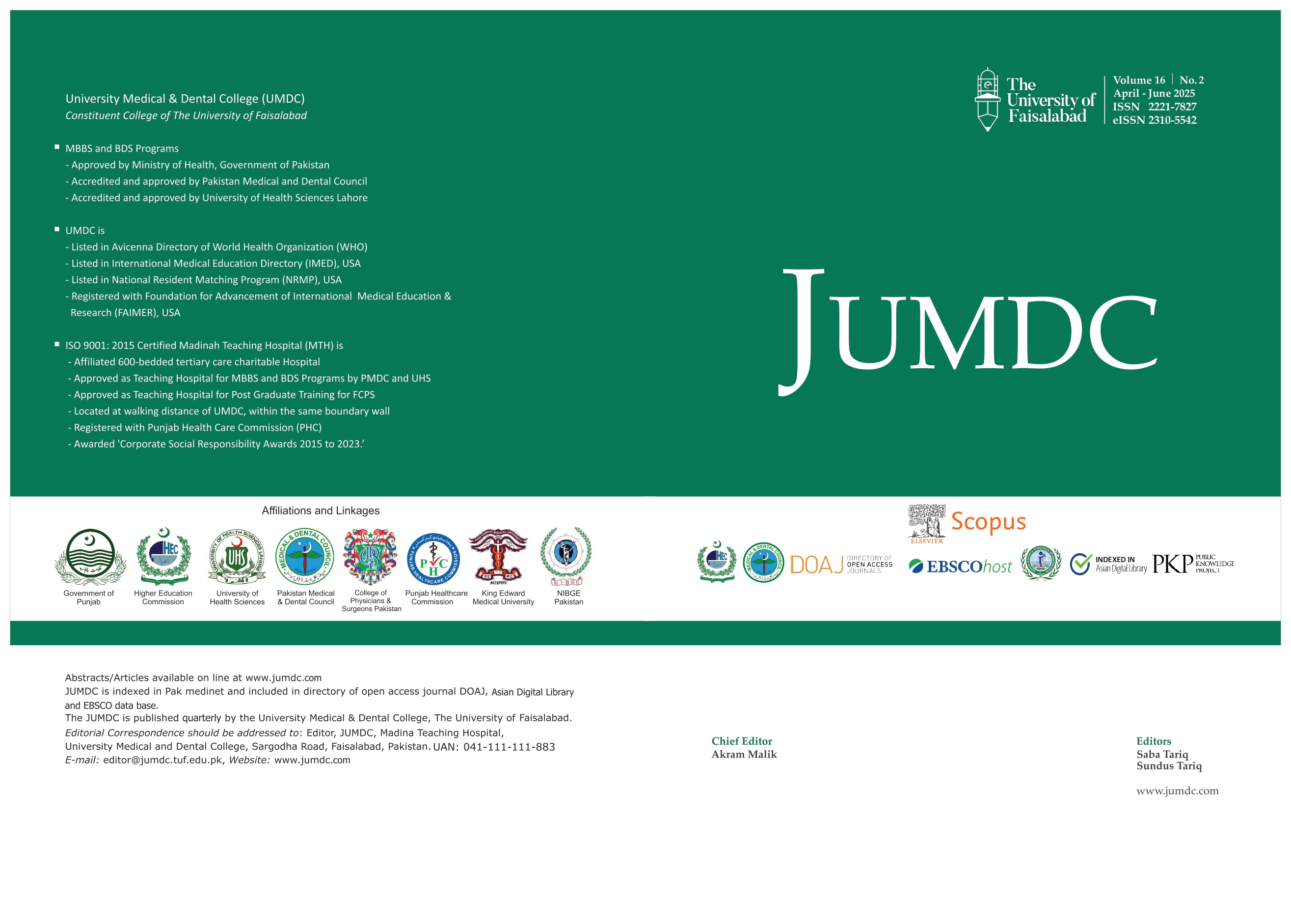Immunohistochemical expression of hypoxia inducible factor-1 alpha (Hif -1α) in patients of head and neck squamous cell carcinoma
HIF-1α expression in head and neck scc
Abstract
BACKGROUND & OBJECTIVE: Hypoxia-inducible factor-1 alpha (HIF-1α) could serve as a molecular target for therapy in head and neck squamous cell carcinoma (HNSCC). Limited research has been conducted on HIF-1α expression in the Pakistani population, and global studies have shown conflicting results. This study aims to measure the expression of Hypoxia-inducible factor-1 alpha (HIF-1α) in patients with HNSCC through immunohistochemistry.
METHODOLOGY: Sixty biopsy specimens from HNSCC patients were analyzed for HIF-1α expression using immunohistochemistry with a standard immunoperoxidase technique. The final immunolabeling score was derived by multiplying the proportion and intensity scores.
RESULTS: The age range in our study sample varied greatly between 25 to 82 years, with the mean age being 55.4±7.4 years. The gender distribution revealed 43 male patients (72%) and 17 female patients (28%). The highest number of cases involved the oral cavity (n=25), followed by the laryngeal region (n=23), the nasopharynx (n=8) and the head and neck skin (n=4). Results revealed that the highest frequency of cases was of intermediate grade (n=28), followed by low-grade tumor (n=17) and high-grade tumors (n=15). A total of 36 tumor showed positive HIF-1α staining (60% of the cases). However, no significant associations were found between HIF-1α expression and other clinicopathological parameters.
CONCLUSION: Our population recorded a significantly elevated expression of HIF-1α in HNSCC patients. Therefore, HIF-1α may be an invaluable marker for early diagnosis and a potential target for molecular therapy against HNSCC.
Copyright (c) 2025 Journal of University Medical & Dental College

This work is licensed under a Creative Commons Attribution 4.0 International License.

This work is licensed under a Creative Commons Attribution 4.0 International License.





















